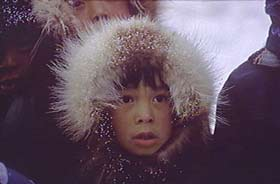
Alaskan Environmental Migrations

T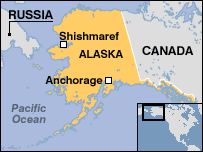 he
entire Inupiat village of Shishmaref, population 600, is planning to
move 13.5 miles (22 kilometers) inland in the next four years to
avoid rising waters caused by global
warming.
he
entire Inupiat village of Shishmaref, population 600, is planning to
move 13.5 miles (22 kilometers) inland in the next four years to
avoid rising waters caused by global
warming.
http://news.nationalgeographic.com/news/2005/11/1118_051118_disaster_refugee.html
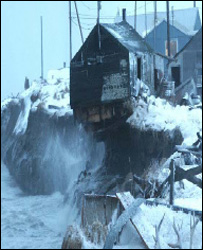
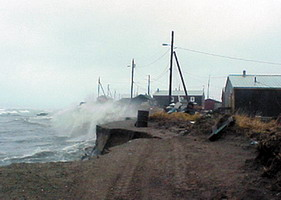
http://www.arctic.noaa.gov/detect/human-shishmaref.shtml
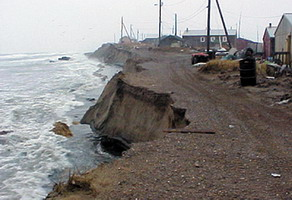
http://news.bbc.co.uk/1/hi/world/europe/3940399.stm
The village of Shishmaref lies on a tiny island on the edge of the arctic circle - and it is literally being swallowed by the sea.
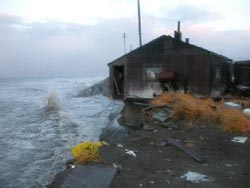
Houses the Eskimos have occupied for generations are now wilting and buckled.
Some have fallen into the sea. Not only is the earth crumbling underfoot, but the waves are rising ominously all around. Some estimate that the sea moves inland three metres a year
http://www.loe.org/shows/shows.htm?programID=04-P13-00050 A12_s2_2_1
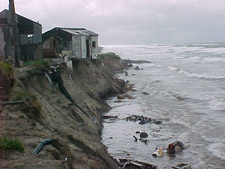 A
Shishmaref house undermined by coastal erosion
A
Shishmaref house undermined by coastal erosion
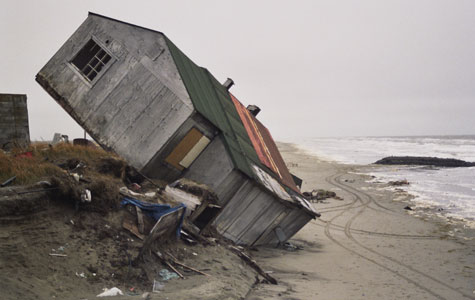
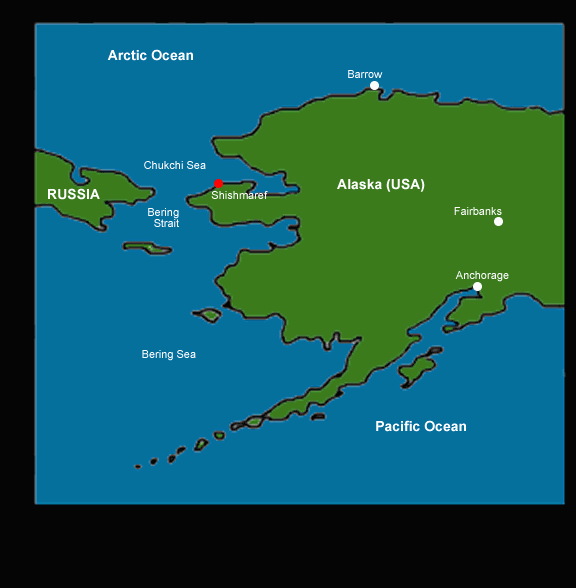
The average winter temperature in Alaska is now 4 degrees Celsius higher than it was 40 years ago.
As climate change causes the arctic to warm up, the layer of frozen ground that covers the surface melts, becoming soft and easily worn away. This means that the small island that the town of Shishmaref sits on was once solid but now it is like a pile of shifting sand and dirt.
Without frozen ground and ice around the island, the sand and dirt wears away when big storms happen. So much of the island is wearing away that the Eskimo people of the village might move their entire town somewhere else.
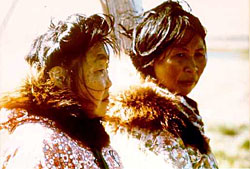
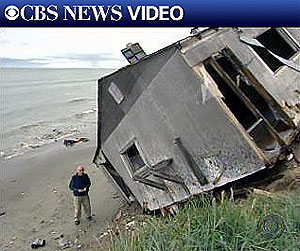
Native women from the village of Shishmaref
http://www.20minutos.es/noticia/161062/0/alaska/isla/hunde/
Another 20 communities in Alaska are looking to relocate, and the Army Corps of Engineers estimates more than 160 are threatened by erosion.
A12_s2_2_2